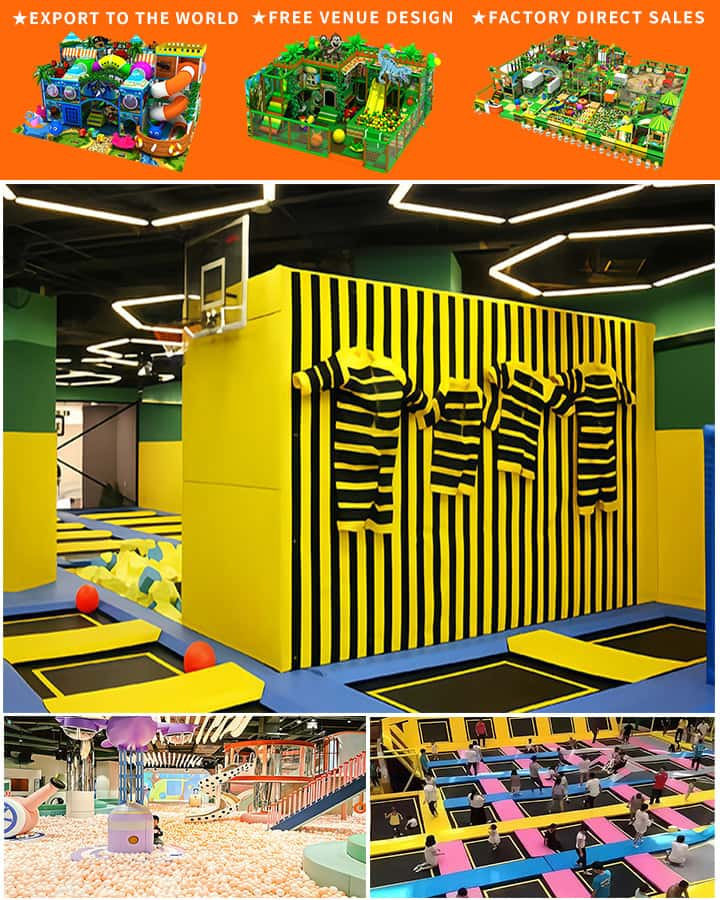Creating an engaging and stimulating indoor play area for children can be both a fun and rewarding challenge. With a bit of creativity and planning, you can design a space that not only keeps kids entertained but also supports their development and learning. Here are some innovative ideas to inspire your indoor play area:
1. Interactive Learning Walls
Transform a blank wall into an interactive learning space by incorporating educational elements. Magnetic alphabets, numbers, and shapes can be attached to a magnetic board, allowing children to explore letters and basic math concepts. For an added twist, create a felt board where kids can rearrange story scenes or match different textures and colors. Interactive whiteboards or chalkboards are also great for drawing and practicing writing skills.
2. Sensory Play Corner
A sensory play corner is perfect for young children who enjoy hands-on experiences. Fill bins with materials like rice, sand, beans, or pasta and include scoops, cups, and small toys for excavation and exploration. Add a water table for splashing fun, and incorporate textured fabrics, soft lights, and gentle music to enhance the sensory experience. This type of play promotes fine motor skills, tactile exploration, and cognitive development.

3. Reading Nook
Cultivate a love for books with a cozy reading nook. Create a small tent or fort using blankets and cushions, and stock it with a variety of age-appropriate books. Add a soft rug, some stuffed animals, and a small bookshelf to keep everything organized and inviting. Good lighting is essential, so consider adding a child-safe floor lamp or fairy lights to create a warm and enchanting atmosphere.
4. Art Station
An art station provides endless opportunities for creativity and self-expression. Set up a large table with washable paints, crayons, markers, colored paper, and various crafting supplies. Hang a corkboard nearby to display completed masterpieces. Encourage children to experiment with different materials such as glue, glitter, beads, and clay. An easel can also be included for larger projects, and a rolling cart makes it easy to store and transport supplies.
5. Indoor Obstacle Course
Design an indoor obstacle course to encourage physical activity and gross motor development. Use pillows, cushions, hula hoops, and tunnels to create a series of challenges that kids can navigate. Incorporate balance beams (made from sturdy boards), climbing ropes, or steps to add variety. Make sure the course is safe and appropriate for your child’s age and abilities, and let them have fun testing their agility and coordination.
6. Imaginative Playhouse
A playhouse or tent can become the focal point of imaginative play. Whether it’s a simple pop-up tent or a more elaborate DIY creation using furniture and fabric, a playhouse can spark endless adventures. Decorate it with role-play items like kitchen utensils, doctor kits, or tool sets to encourage pretend play. This kind of play fosters social skills, language development, and emotional growth.
7. Science and Exploration Center
Inspire young scientists with a dedicated science and exploration center. Set up shelves with jars filled with natural objects like rocks, leaves, and shells for sorting and examination. Include magnifying glasses, test tubes, and simple circuit kits to conduct safe, hands-on experiments. A weather station with thermometers, barometers, and rain gauges can teach children about meteorology. This area promotes curiosity, critical thinking, and STEM education.
8. Dress-Up Corner
A dress-up corner allows children to step into different roles and scenarios. Provide a collection of costumes, hats, scarves, and accessories representing various professions, characters, and cultures. A full-length mirror can make the experience even more enjoyable as kids see themselves in different outfits. This activity boosts imagination, empathy, and social skills as children explore new identities and narratives.
Conclusion
Designing an indoor play area for children requires thoughtful consideration of their interests, developmental needs, and safety. By incorporating these innovative ideas—from interactive learning walls to science centers—you can create a dynamic environment that nurtures creativity, curiosity, and growth. So gather your supplies, unleash your creativity, and watch as your indoor play area becomes a haven of joy and learning for the little ones!




